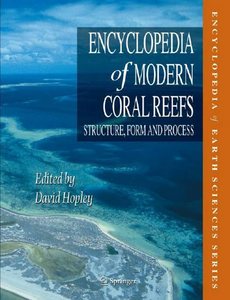Coral cays - geohydrology
Parnell, Kevin E. (2011) Coral cays - geohydrology. In: Hopley, David, (ed.) Encyclopedia of Modern Coral Reefs: structure, form and process. Encyclopedia of Earth Science . Springer, Dordrecht, The Netherlands, pp. 254-256.
![[img]](https://researchonline.jcu.edu.au/19075/1.hassmallThumbnailVersion/19075_Parnell_2011_Book_Cover.jpg)
|
Image (JPEG) (Book Cover)
- Cover Image
Download (95kB) |
|
|
PDF (Published Version)
- Published Version
Restricted to Repository staff only |
Abstract
The earliest work on geohydrology applicable to coral cays was undertaken separately by Ghyben and Herzberg in the late 1800s and early 1900s, who determined the shape and thickness of a freshwater lens that forms under coral cays once they reach a minimum size. The relationship, which is based on the different densities of freshwater and saltwater, is expressed in the Ghyben–Herzberg equation:
z = (ρf/(ρs - ρf))h,
where h is the distance above sea level to the water table (phreatic surface), z is the distance below sea level to the freshwater–saltwater interface, and rs and rf are the densities of saltwater and freshwater, respectively. Using densities of 1.00 g cm-3 for freshwater and 1.025 g cm-3 for saltwater gives the often quoted relationship
z = 40 h.
The Ghyben–Herzberg model makes an assumption of a single layer homogeneous medium, and a system in hydrostatic equilibrium, with no mixing of fresh and salt water, giving a sharp transition between the freshwater and saltwater. This model is normally implemented with the Dupuit assumption of horizontal flow (Oberdorfer et al., 1990) and is frequently applied in resource assessments of potable water for human use on inhabited coral cay islands. In reality, this model makes assumptions that are clearly not valid inmost coral reef environments. Tidal fluctuations of the water level are assumed to be negligible, watermovement within the lens is assumed to result entirely from recharge-induced changes to the hydraulic head, outflow from the freshwater lens required to maintain mass-balance is assumed to take place at the island margin, and mixing within the framework caused by various water movements and pressure gradients (such as tidal mixing) is not considered. Perhaps most significantly, the assumption of a homogeneous medium rarely holds. In particular, differences in the reef framework above and below the Pleistocene solution unconformity (sometimes called the Thurber discontinuity) typically found 6–25 below the current reef flat level in tectonically stable areas, means that the model is fundamentally flawed. In general, a very broad transition zone between fresh and saltwater can be expected.
| Item ID: | 19075 |
|---|---|
| Item Type: | Book Chapter (Reference) |
| ISBN: | 978-90-481-2639-2 |
| Date Deposited: | 21 Feb 2012 00:52 |
| FoR Codes: | 04 EARTH SCIENCES > 0406 Physical Geography and Environmental Geoscience > 040601 Geomorphology and Regolith and Landscape Evolution @ 100% |
| SEO Codes: | 97 EXPANDING KNOWLEDGE > 970104 Expanding Knowledge in the Earth Sciences @ 100% |
| Downloads: |
Total: 231 Last 12 Months: 6 |
| More Statistics |



